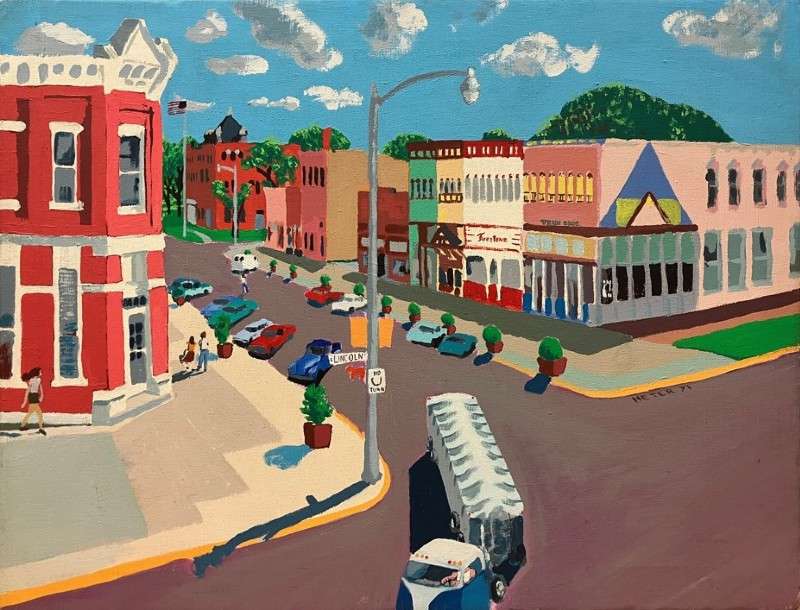
Smoky Valley Arts and Folklife Center
LINDSBORG - A look at the works of John Heter will be the next exhibition at the Smoky Valley Arts and Folklife Center in Lindsborg.
The center, in partnership with The Raymer Society, will host a John Heter (1944-2013) retrospective exhibition from Sept. 30 through Oct. 30. A reception for the exhibition is scheduled for 2-4 p.m. Oct. 2.
The Smoky Valley Arts and Folklife Center, 114 1/2 S. Main Street, is open 1-5 p.m. Friday through Sunday.
Heter was a lifelong artist and craftsman who worked in many mediums and was a talented musician. He came to Lindsborg in 1970 to attend Bethany College and spent the rest of his life as a Lindsborg resident. His early paintings were the street scenes of Lindsborg, as viewed from his southwest corner studio/apartment in the second story of the Sundstrom Building. Heter and many other Bethany art students lived in these second-story apartments called “The Slums” during the late 1960s and 1970s.
Heter worked for The Simmental Shield Magazine and Kansas Business News in the 1970s as a layout and paste-up artist. Several of his paintings were featured on the covers of these publications. After his tenure with the magazines, he worked for MCDS in McPherson, until his retirement in 2006. He continued to work on his art after retiring.
Over his life, Heter painted scenes from his experiences in various subjects. His unique style of not blending the colors in his work gives a “paint by number” effect that makes his paintings distinctive. Heter was always experimenting with different mediums, including scratchboard drawings, scrimshaw on old piano ivories, and assemblages from piano parts that he called “Kachinas” or “Piano Men.” Drawing from his musical talents, he created musical instruments as art objects and as actual working instruments later in his life.
This retrospective represents many of the mediums in which Heter worked. Heter’s work is in private collections thought out the United States, and the works in this exhibition are all on loan from many of them.






